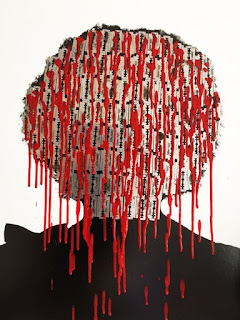This election season in the United States has shown me, as I'm sure it has many of you, how easy it is to fray the threads of civil society. Imagine Ukraine, a nation with a short democratic history, a just three-years-old revolution, occupied territories, and an ongoing war in the East. Plus, the still-strong remnants of Soviet bureaucracy and a tenacious system of corruption that are a part of everyday life. For the past two weeks, I've been in Ukraine conducting an assessment of the cultural heritage sector with my colleague Vaiva Lankeliene from Lithuania for the Culture and Creativity EU-Eastern Partnership Programme.
To be sure, we've found many needs and issues in the sector in great need of reform. More importantly though, it's been great to see people that really are heroes--people who, in whatever way they can, are working to make museums and cultural heritage better. Their efforts are resulting, bit by bit, in those stronger threads that weave a stronger civil society together.
Here's what I mean:
- Two years ago, a new staffer at the Ministry of Culture discovers there is virtually no information collected about the museum sector. Using his own car, and paying for his own gas, he travels thousands of kilometers around the country, visiting museums and building statistical information that serves as critical benchmarks for the sector. Sadly, he's now formerly of the ministry, but the useful data lives on.
- A director of a historic house museum believes that her staff should be like family, as it is a family house. They work together, everyone sharing responsibilities--everyone gives tours for instance, as a way of staying connected and making room for everyone to pursue their research and community engagement interests. The result is a museum that is more crowded than far larger ones. The public feels the spirit of the place.
- The collective work of the L'viv city administration who joined together to develop the newly-opened project The Space of Synagogues (below), an important and moving first step in integrating Ukraine's Jewish history into the nation's larger historical narrative. It provides visitors to the World Heritage city a chance to contemplate and learn about an aspect of the city's history long erased.
- The colleague who received a grant to work with museums in digitizing their collections and is meeting unexpected resistance to such a project. Some are opposed to sharing work that, of course, belong to the public. He persists, diligently, in convincing colleagues and pondering new ways of persuasion. Not surprisingly, he's finding that lower-level staff have significant interest in collaborating, but directors, not so much. I know he'll get there.
- The head of historic preservation in a city, who works to control development in the historic center, despite the willingness of investors to go above her department to get a yes, when no was the right answer already given. She works with colleagues in other historic cities to develop and share guidelines for appropriate development, when most city departments are independent actors and information is hoarded. Like it is for most of my colleagues here, corruption is the eternal subtext. Several museum directors mentioned wanting to have a lawyer on staff, because there is so much legal maneuvering, particularly about property rights.
- The enthusiastic director of a tiny small-town museum who wishes for more opportunities for professional development. But, he cheerfully says, I took an online course on grant-writing, wrote a grant and got it. The result: a series of public programs, tourist guides and walking tours.
- Two young staff members at a contemporary art center talk about their role as building up confidence and motivation among not just their staff members, but the community as well. They connect closely the ideas of public and personal responsibility in the realms of art and life. Said one, the result of the 2014 Revolution was that people now understood: "No one will fix our problems. We have no illusions left. We just have to move our ass."
That last statement, and all my experiences this trip, have reinforced Margaret Mead's belief,
Never doubt that a small group of thoughtful, committed citizens can change the world; indeed, it's the only thing that ever has.Changing the world one day, one step at a time. Heroes. Every. Day.
From the new memorial in L'viv
























